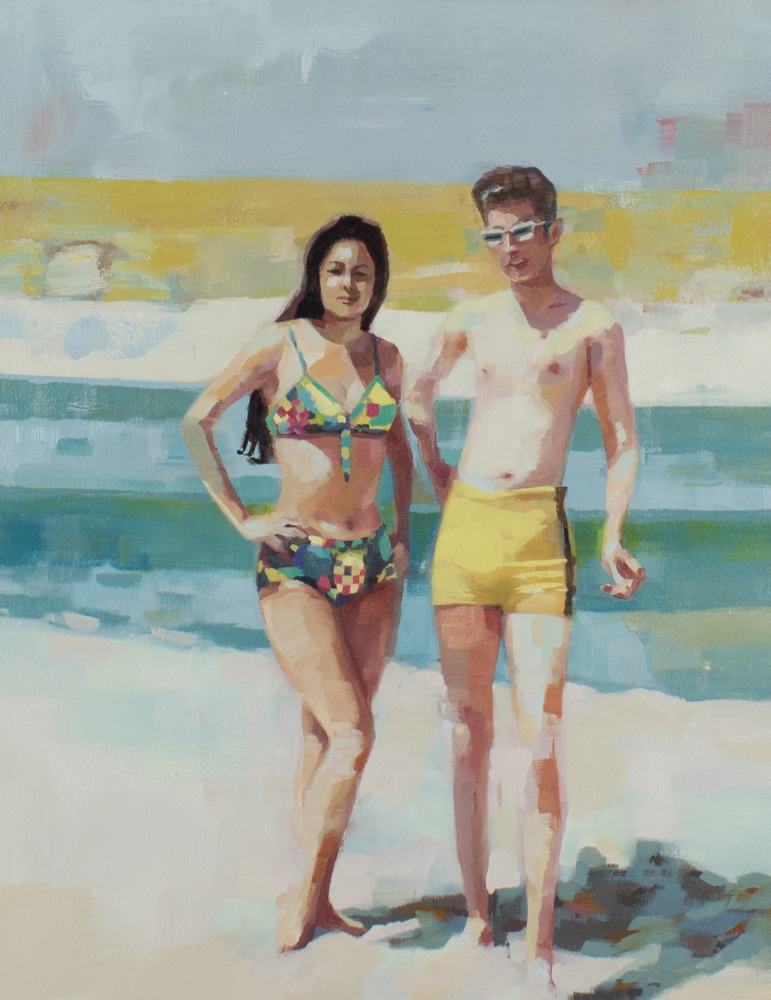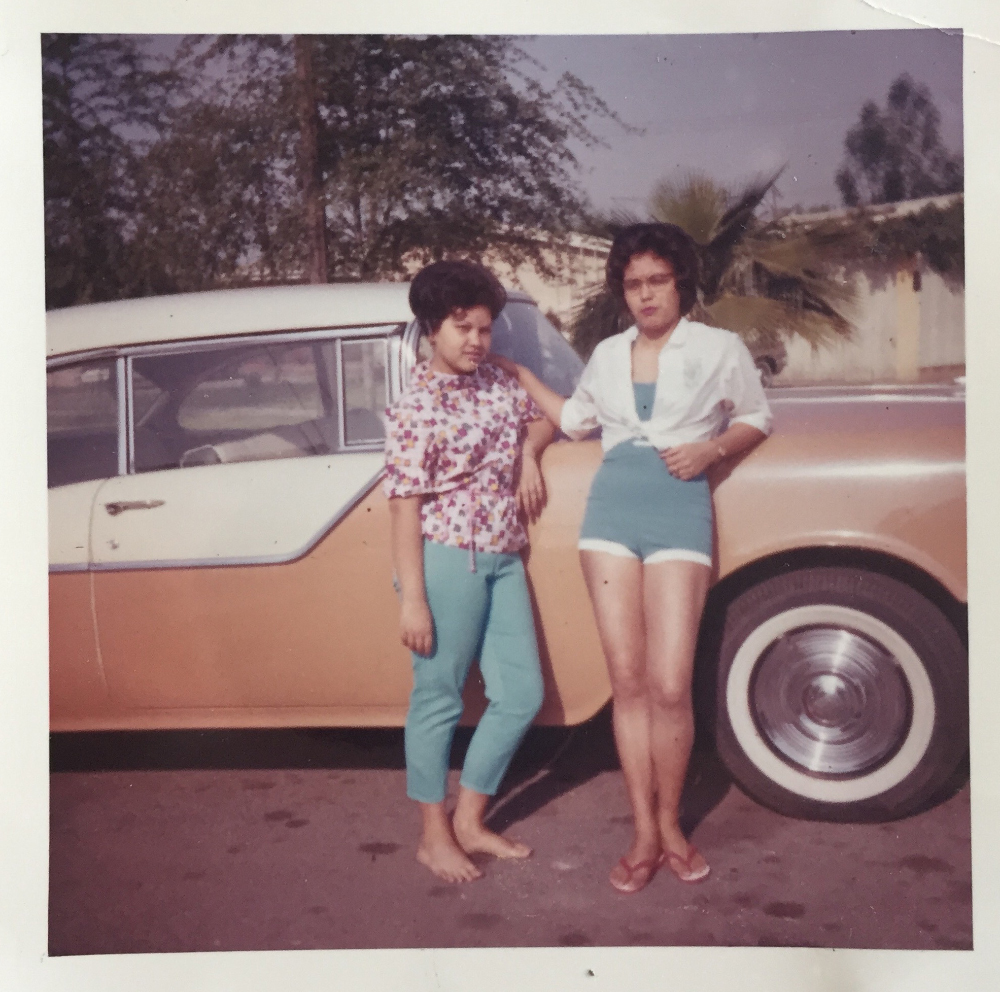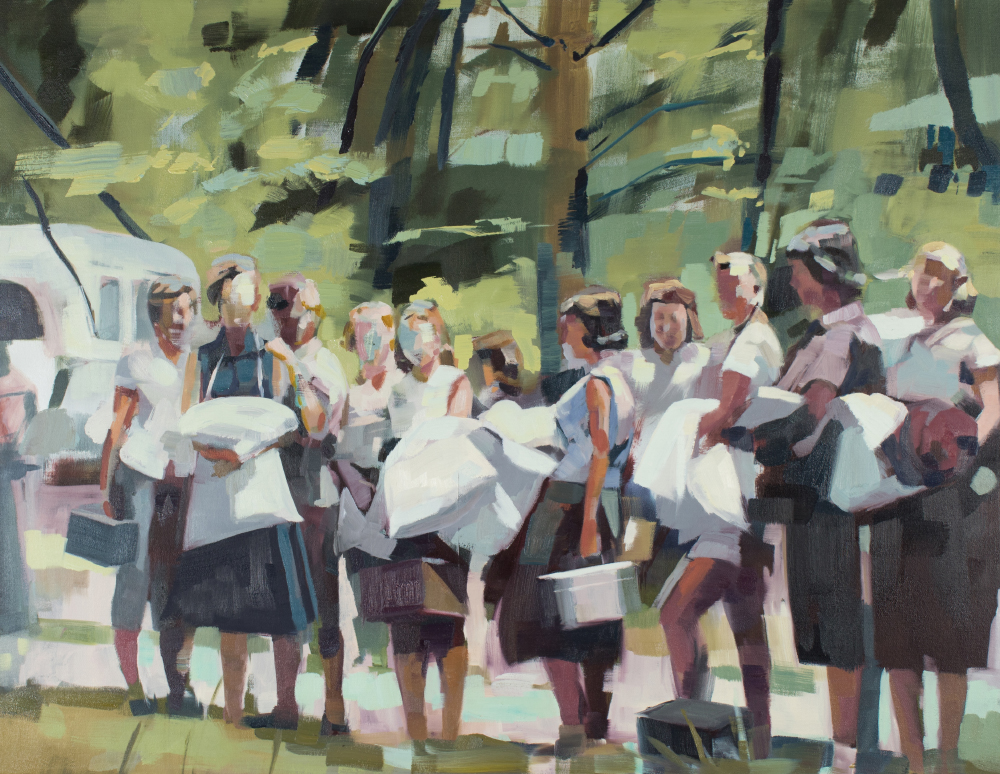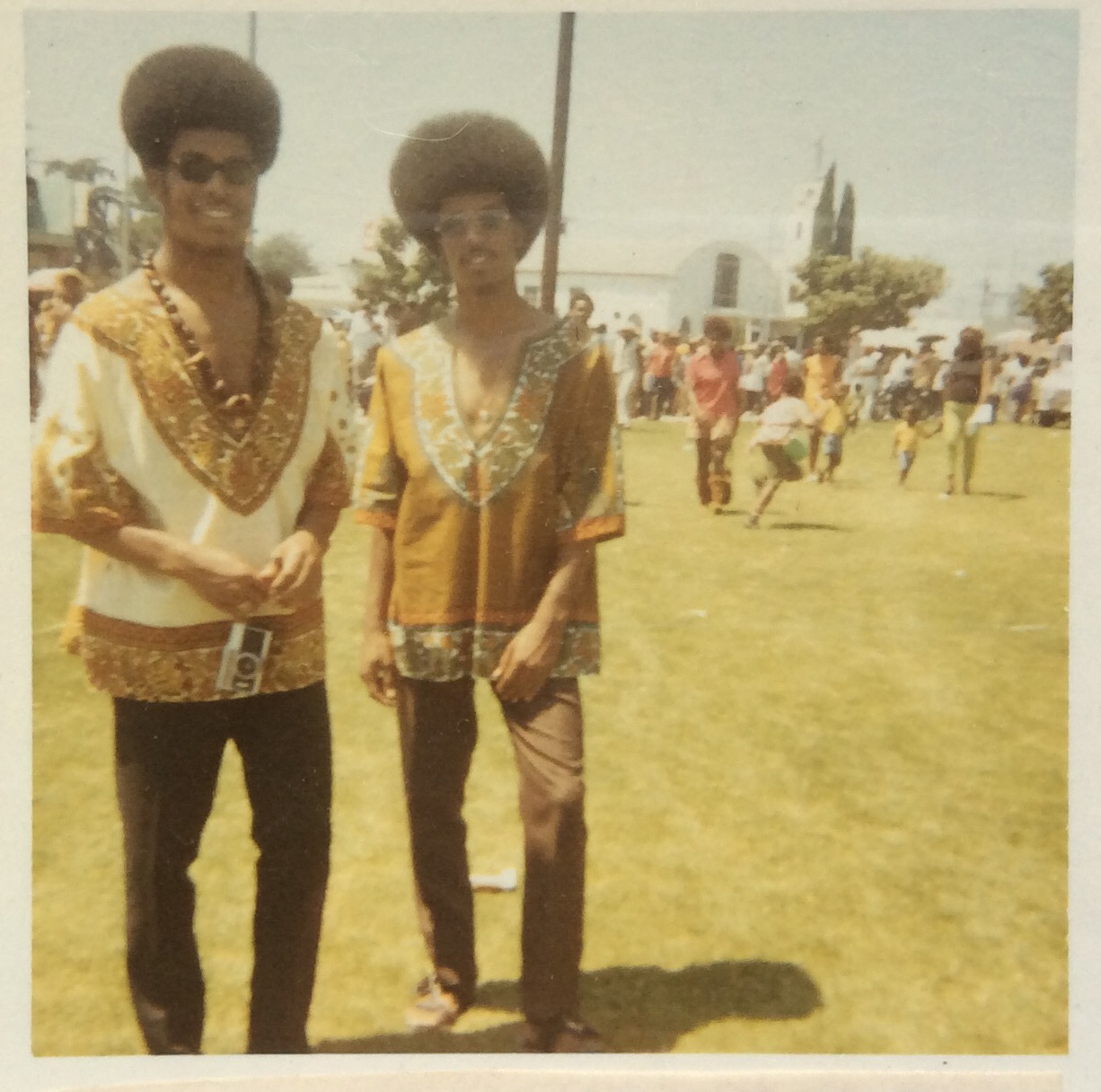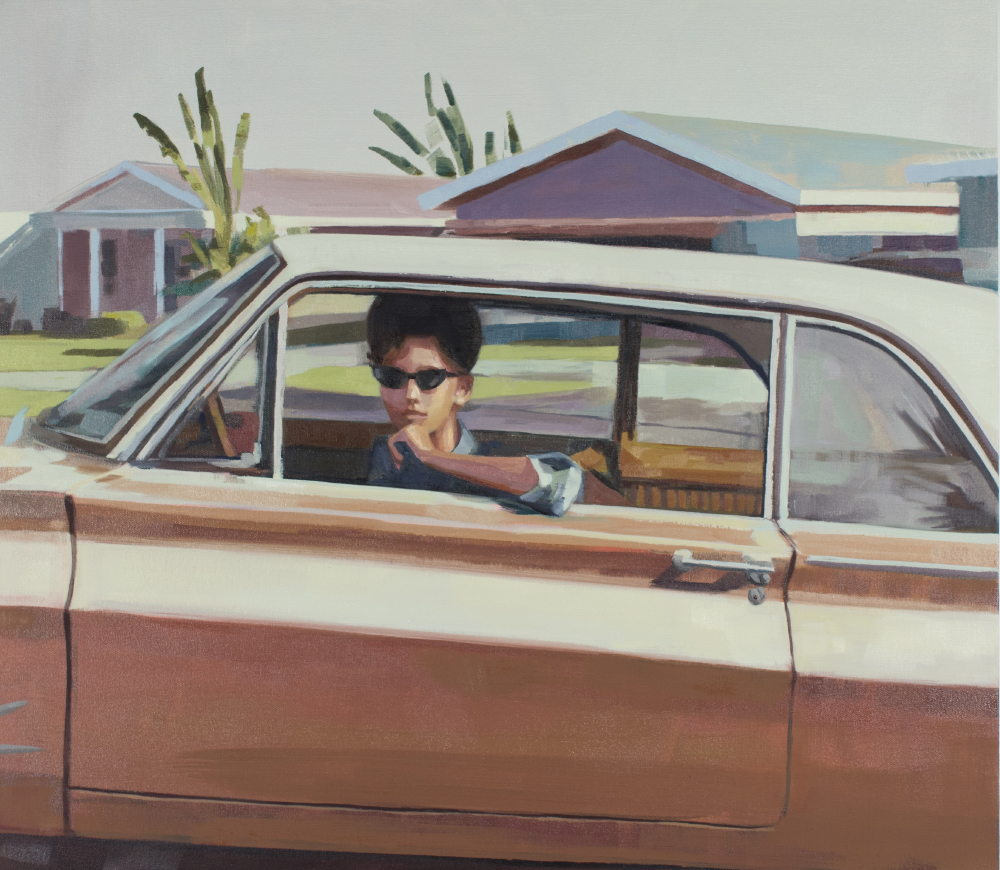Kirsten Tradowsky: Time Echo
“I’m drawn to images from different decades that capture these cyclical moments through time. While these events are familiar, I know nothing about the people in the pictures. They are strangers and it’s this mystery of our ability to connect with people we don’t know, simply through familiar experiences, that I try to summon with my paintings.“
I have always been fascinated by the fluidity between and relationships of painting and photography. Photography has long influenced painters–a number of years ago, the Phillips Collection in Washington DC featured an exhibition, Snapshot: Painters and Photography, Bonnard to Vuillard, revealing that many of the post-impressionists owned cameras and created photographs that later inspired their paintings. Prior to that, many impressionist painters based their artwork on photographs.
Painter Kirsten Tradowsky follows in that tradition, using vintage photographs from the 1920’s – 1970’s to inspire her paintings, photographs that allow her to examine vernacular worlds filled with the faded hues of old Kodachrome, taking us back to a time of full skirts, car coats, sack races and trips in the station wagon. Kirsten recently opened Time Echo, an exhibition of this work at the Kopeikin Gallery in Los Angeles, running through July 7th, 2018. An interview with the artist follows.
Kirsten Tradowsky’s work has been exhibited throughout the United States, including Tinlark Gallery in Los Angeles and Red Dot Art Fair in New York. She earned a BFA from the Cleveland Institute of Art and an MFA from the California College of the Arts. She currently works in San Francisco.
Time Echo
Discarded snapshots are thrown into the world for anyone to claim. I hunt for images in antique stores and flea markets. For this show, I also had access to Paul Kopeikin’s extensive collection of vernacular photographs. I’m taken by, how throughout time, people photograph similar themes: showing off a new car, a group photo with friends in the yard, a holiday on the beach, or the occasional photo of a shy friend in the corner. There is a companionship and familiarity we feel with these strangers in the pictures, whether it’s the awkwardness of a date we once had or the excitement of a family outing.
I’m drawn to images from different decades that capture these cyclical moments through time. While these events are familiar, I know nothing about the people in the pictures. They are strangers and it’s this mystery of our ability to connect with people we don’t know, simply through familiar experiences, that I try to summon with my paintings.
I edit every photograph by painting the elements I find most interesting, turning the image into a reference point. Then, in the process of painting, I often diminish the specifics of the people and places. I do this to mimic our mind’s memory, where we forget details but hang on to how we felt in certain moments. I also use brush marks and color to create a mood, overstating or understating certain elements, so my paintings can act as passageways through which viewers can step into their own pasts.
The details that place my paintings in a certain period act as anchors. If we’ve lived through that time ourselves, they offer us something to hold on to as we drift through time and space. Because our recollections tend to bring forward and contemporize people and places, my paintings allow the viewers to remember the shape of eyeglasses, or how ribbons were worn, or the style of a collar, and at least temporarily place their own remembrances back in their correct time and historic surroundings.
These details also allow us to travel into the imagined pasts of the people who came before us, connecting these markers of time with real and imagined stories of our parents and grandparents—some of who may only echo through our memories based on glimpses of our own family photographs. – Kristen Tradowsky
Congrats on the exhibition at the Kopeikin Gallery! Tell us a little bit about your growing up and how you came to your painting practice.
I grew up in a family of artists. My father is a sculptor, my older brother taught me how to paint and my younger brother is a woodworker; we were always creating.
I later found comfort in painting as an odd child and queer teen. Making art was the best way for me to express myself. I spent countless hours in the art room in high school. I later went to the Cleveland Institute of Art and then moved to San Francisco to get my masters in painting from The California College of the Arts.
It seems like much of your painting practice is based on vintage photographs as inspiration, how did this way of working become part of your practice?
I started looking at vintage advertising and photos in National Geographic and Life Magazines early on, then started collecting yearbooks and searching for photographs at estate sales and flea markets as a teenager. For me, it’s a way to time travel. I collect all these discarded photos and find that when I paint them I can investigate them, interpret them in my own style, and breathe new life into them. I love the mystery of not knowing these peoples’ stories, and the melancholy of lives discarded. I also love the process of painting from these snapshots, allowing me to spontaneously pull a color from one part of the image and a pattern from another and orchestrate them in oil paint on the canvas.
Why are you drawn to vintage photographs and do you think of your work as nostalgic?
I am drawn to vintage vernacular photography, especially from the 1920s to 1970s, because of the colors and the styles. These lost snapshots have time to age and painting an image that was taken 40 years, 50 years, or even longer ago gives us time to forget the specifics of a place, and because they are found photographs, we don’t know who the people in these images are. I actually don’t see my work as nostalgic, in the sense of a sentimental yearning for the past; below the surface of the glamorous clothes and the perfect hairstyles lies a darker and very much imperfect time. With my painting style in particular I don’t try to capture a lost moment. Rather, I try to emulate how our memories work; forgetting individual details and instead holding on to how we felt in a particular moment; or exaggerating details, even combining different memories into one, or remembering events that never happened. That’s how I try to evoke a feeling of recognition in the viewer, of things they may have seen or felt in their own lives, or imagined for the generations who have come before.
I started off as a painter and then shifted to photography, is that ever a consideration for you?
In art school I was really interested in becoming a photographer, but ultimately never felt fully at ease in the medium. I just find the process of painting more satisfying, where I build every image with my marks bit by bit. By using photography as inspiration for my paintings, I’ve found a happy place in which I can draw on the elements that inspire me most in each medium.
Posts on Lenscratch may not be reproduced without the permission of the Lenscratch staff and the photographer.
Recommended
-
Nathan Bolton in Conversation with Douglas BreaultJanuary 3rd, 2026
-
Salua Ares: Absense as FormNovember 29th, 2025
-
Ricardo Miguel Hernández: When the memory turns to dust and Beyond PainNovember 28th, 2025
-
Pamela Landau Connolly: Columbus DriveNovember 26th, 2025



